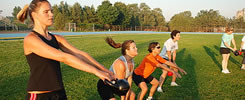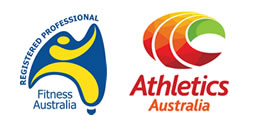Marathon runners are no doubt very strong when it comes to enduring pain & pushing the limits of the body, but the old mantra of ‘no pain no gain’ isn’t necessarily required every race. Joint pain & foot complaints especially blisters can be managed to improve the life of the runner.
Foot care and blister prevention is crucial to long term running. Preventing blisters from forming can be as simple as correct footwear, most importantly well fitting socks and protection in the areas where your feet run & hotpots form. Follow these steps to keep your feet in top shape;
- Start slowly with new shoes. Start with a medium distance run & take note of any areas where your new shoes rub. Even the same model shoes may rub in new areas due to slight changes in the shoes so check your feet after your first run & listen to what your body tells you.
- Lace up ‘comfortably’. Loose shoes will move excessively & rub, most likely on the heels & sole of the foot, while laces that are too tight will lead to rubbing on the side of the foot where the shoes is pulled in tight so found the balance. Also remember on hot days your feet may expand slightly Correct sized shoes aren’t going to fall off, even with lightly tied laces so refrain from strangling the feet.
- Prevent blisters forming through choosing correct sized shoes & socks, taping problem areas and lubricants such as Vaseline or specialist lubricants.
- Look after your feet. Cut your nails regularly & if required get a pedicure to remove excessive callous formations.
Joint pain can be managed through;
- Footwear. Old tired shoes are often the culprit when your joints begin to become sorer without any other changes. Aim to buy new shoes every 6-12 months (or 600-900km) for intermediate to advanced runners.
- Training volumes. Listen to your body & reduce your training if you joints are complaining. Don’t make sudden increases in training volume without adequate time for the body to adapt.
- Adequate intake of fish oils, such as those found in oily fish like salmon & tuna. Fish oil supplements are also effective as are Chondroitin & Glucosamine.
- Recovery well. Ensure you use recovery strategies such as cool downs, stretching, massage, ice baths or water runs to limit post run inflammation and manage your training volume
Enjoy your running and remember some things don’t have to be endured. Train smart and save the tough stuff for your next PB attempt, not everyday training.



Speak Your Mind